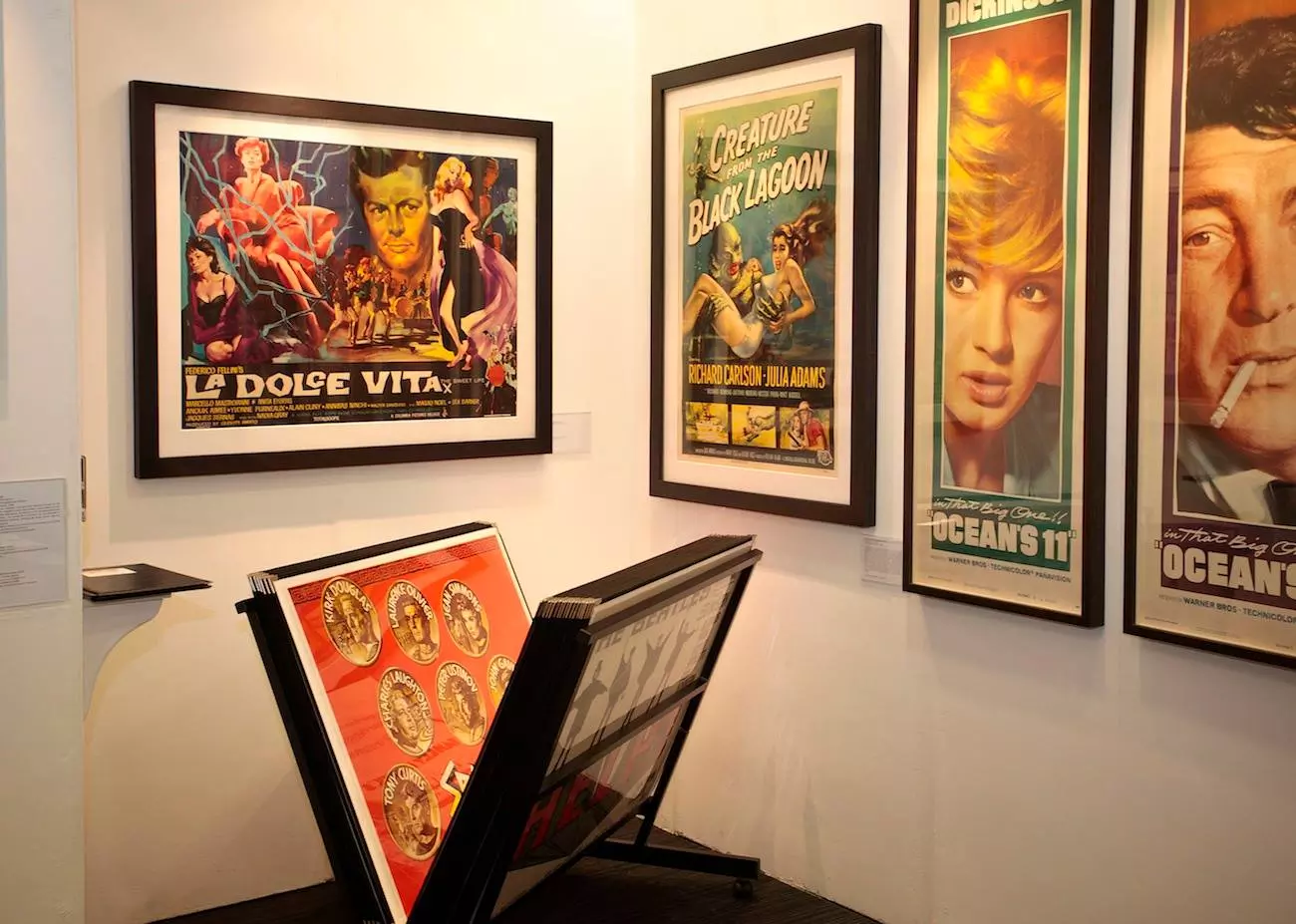Have you ever wondered: what's the difference between a print and a poster? We look at how prints and posters are featured in poster collecting.
What's the difference between a print and a poster?
The distinction between a poster and an art print is as difficult to establish as the proverbial chicken and the egg. After all, posters are printed, and art prints can often look like posters, so where does the difference lie? The history of the two art formats is also of little help.
By the beginning of the 20th century, there was a boom in the production of commercial posters. Artists and designers were hired in droves to create stunning and enticing advertisements to boost their client's sales. Having so many artists working in the same industry, the artistic quality of posters began to flourish, with designs and colours being used in increasingly creative ways.
This led to many people taking these posters down from their hoardings to take home, turning them into collectable artworks in their own right. People were then willing to spend money on these posters, especially those created by prominent artists such as Toulouse-Lautrec, further increasing their pedigree as a genuine work of art.
But here, we find a possible distinction. While artists were producing these posters, putting greater and greater artistic qualities into their work, they were still, in the end, commercial devices. Posters are used to promote products and boost sales, whereas art prints are genuine art pieces used to convey an artist's aesthetic vision rather than to serve a commercial interest.

What Is the Difference Between an Art Print and a Poster?
There is even a distinction to be made between an "art print" and a "fine art print". The latter is considered an original work of art produced by an artist to sell. The former is a way of reproducing original artworks or paintings to sell on a large scale. These are mass-produced as posters, canvases or other forms of print. More often than not, they are printed on premium cotton papers using high-quality ink, making them excellent collector's items for those who don't have the money to spend amassing an original art collection.
Modern art prints are also known as "giclees". These high-quality recreations are produced on inkjet printers and commonly follow particular standards:
While standard art prints are printed using dye-based inks, giclees are printed with high-quality, pigment-based ink that will not fade if properly maintained.
The quality of the giclee prints means that they can capture the full range of hues visible in the original artwork, with sharper detail than standard prints.
Giclee paper is archival quality, containing no acids, ensuring that it will last for a long time without fading or yellowing.
Another great benefit to fine art prints and the quality of the materials used to create them is that they can be printed on various materials. These prints are a versatile and resilient way to reproduce your favourite images, from cotton-based papers to wood and even copper plates.

Poster Prints
Poster prints are the best choice for those who want to create a decorative image, mass-produce it, and make it available to as many people as possible. Thinking back to the poster racks in music shops where you could browse through a selection of posters, all relatively cheap and widely available. These are poster prints and are not of as fine a quality as fine art prints.

Poster prints are not produced with the finest quality paper or ink, meaning they are easy to produce in large quantities. While the images may be very creative and exciting regarding their artistic qualities, the poster material itself will not be. If you had any of these types of prints hanging in your bedroom, you might notice that they can begin to yellow or fade over the years, especially if they are placed in direct sunlight.
Fine art prints, produced with archival grade paper, do not fade and stay as sharp as the day you hung them. However, given that poster prints are a cheap alternative and, let's face it, you still get the same image at an affordable price, if you care for your poster prints and have framed and maintain them properly, they can last you a good few years. Given the acid content of the cheaper paper, the best thing you can do to preserve these poster prints is to keep them out of the sun. This way, the poster will remain free of damage and prevent fading. However, if you want something of high quality with great value worth adding to your collection, fine art prints are the way to go.
COMMON USES FOR FINE ART PRINTS
While poster prints are a more affordable option and can last a long time if cared for properly, when you have something important to you that needs durability, fine art prints can not be beaten.
At the end of the day, poster prints are only supposed to be temporary decorations, whereas fine art prints will last for years and are perfect for commemorating special occasions.
It is becoming increasingly common for people to have photos that they love printed on quality materials, in the vain of a fine art print. For those special occasions, such as weddings, birthdays or other celebrations that you want to immortalise, fine art prints are one of the best ways to commemorate the things you love and display in your home.
Again, the main benefits of these prints is the quality of the materials used to create them and their durability. The high-quality inks used to create the images of the fine art prints are as close as you can get to perfect.
They will be able to perfectly match the hues and shades of the original photograph to create a brilliant reproduction that will look amazing on your wall. If you prefer more long-lasting materials than paper, you can also get fine art prints made with wood, hardboard or metallic backing.

Common Uses for Posters
From their origins in the late 19th century, posters have always been the format of choice for commercial advertisements. Thankfully, with the progress and innovation that have given us the modern printing techniques we know today, it is even easier to produce them for these purposes.
Today, posters are an incredibly cheap and easy product to mass-produce, meaning they are a cost and time-effective advertising method. Additionally, you can create any poster design with the advent of digital editing software you can imagine.
Of course, while more discerning customers will choose fine art prints to decorate their home, there is still a market for the mass-produced poster. They are a cheap, easy and effective way to decorate a room quickly, and while they may lack quality and longevity, you are still decorating your room with an image that you love. People will always purchase cheaper posters to decorate their rooms with, simply because of the price.
Additionally, it is still profitable to print posters for different audiences. For example, children may decorate their rooms with the images of their favourite bends or footballers one day, only to change their minds and get into cars the next. Therefore, the versatility of the simple poster can not be underestimated as a decoration or as an advertising tool.
Original Vintage Movie Posters for Sale
We created this website to provide a vintage movie poster guide. If you have an interest in classic movie posters from the 1950s, 1960s or 1980s, we hope you will learn more about the most popular posters of the period.
Take a sneak peak at some of the posters we have in stock here. However, if you have a film in mind and don't see it here, please get in touch as we'd be happy to locate it for you.
Are you interested in movie poster collecting? We hope you have gained useful information from this article discussing: What's The Difference Between A Print And A Poster? Follow the links below to discover more about collectable movie posters.

